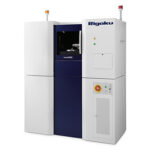MENUMENU
Based on the ability of x-ray radiation to penetrate objects, x-ray tomography is an imaging process where you direct monochromatic x-rays onto a sample.
As the x-rays pass through the sample they interact with it, in a process known as attenuation. Different sample materials will attenuate x-rays in different ways. An image of the sample object is projected onto a detector.
During the process, you rotate the sample through 180° to create three-dimensional representations of it from the projected images.
These are calculated by a tomographic reconstruction algorithm.
The advantage of x-ray tomography as a diagnostic tool is that it is non-destructive and it enables you to capture a series of visualisations of your sample object, tracking them.
This allows you to examine and quantify the internal structures and makeup of objects without damaging or dissecting them.
There are various applications for x-ray tomography, and it is used in a range of disciplines, including pharmaceuticals, Carbon based materials, and many other organic materials, as wells a minerals and metals.

The NANO 3DX is an X-ray microscope (XRM) wich offer 3D computed tomography (CT) images with high contrast and at high resolution. This is accomplished by using a high powered rotating anode X-ray source and a high-resolution CCD detector. The rotating anode provides for fast data acquisition and the ability to switch anode materials easily to optimize contrast for specific sample types. High-resolution, high-contrast X-ray microscopeThe new nano3DX allows you see into many types of samples, including those that have low absorption contrast, for example CFRP, or denser materials like ceramic composites. The nano3DX allows you to achieve this by…